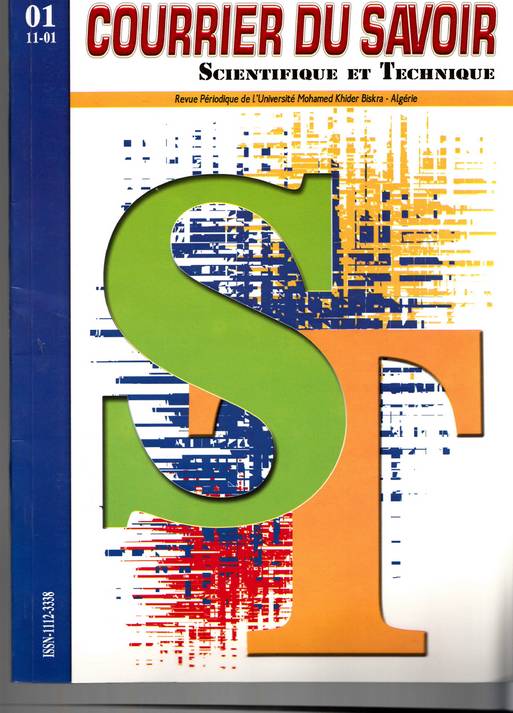BUILT ENVIRONMENT AND ANTISOCIAL BEHAVIOR L’ENVIRONNEMENT BATI ET LES COMPORTEMENTS ANTISOCIAUX.
Résumé
In all countries, regardless of their development, urban
slum residents commit the majority of the reported
crimes. Studies of cities of developing countries appear
to show similar correlations. Numerous studies, of
deviant behavior, point out that squatter areas, and illicit
districts, are the seedbeds in which “delinquents” carry
on their activities. (1)
This paper tends to apprehend the theme of violence and
insecurity in illicit districts from a new point of view, by
adopting the environmental approach to crime. The
study aims to understand how and why this urban shape
produced by the illicit districts affects human behavior
negatively and encourages vandalism.
To test various hypotheses derived from a theoretical
model, a representative sample of persons to be
interviewed was selected from two illicit districts
(Bouakal, and Chikhi) in Batna, a middle city in
Algeria. The city of Batna in Algeria is specified by the
spectacular and singular character of its anarchical
urbanization. The illicit habitat in Batna constitutes the
higher proportion of the real estate park.
Références
[1] Clinard Marshall (B), Abbott Daniely :
Crime in developing countries: a comparative
perspective. John Wiley & Sons. New York
.1973 .PP: 365-370
[2] R.V Clarke : «Les technologies de la
prévention situationnelle». Les cahiers de la
sécurité intérieure N°21, 3eme trimestre
1999.P : 101
[3] C. Chaline, J. Dubois –Maury. La ville et ses
dangers : Prévention et gestion des risques
naturels, sociaux et technologiques. Edition
Masson. Paris. 1994 P 136
[4] Coleman Alice : Le procès de l’utopie vision
et réalité dans les conceptions de l’habitat. Les
cahiers de la recherche architecturale et
urbaine, Espace et sécurité, N°1. Mai 1999.
PP : 51-64
[5] Jacobs J : (1963). The death and life of Great
American cities. New York- Vintage book
[6] Newman Oscar : Defensible Space:
Macmillan, New York 1972.
[7] Tanghe J, Vlaemink S, Berghoef J. : Living
cities, a case for urbanism and guidelines for
32
re-urbanisation. Pergamon Press Oxford. 1984: P: 81
[8] (8): Lynch .K: Good city form. The MIT Press.
Cambridge Massachusetts.1984 P: 126
[9] Chombart de Lawe PH :. Famille et habitation-
Sciences humaines et conception de l’habitation :
Editions CNRS. Paris 1975 PP: 108-121
[10] Griffiths. R. And Shapland J M. (1979). The
vandal’s perspective : meanings and motives.
London. Design Council. PP: 11-17
[11] Clinard Marshall (B), Abbott Daniely :op cit
P:163
[12] Khaled .N . (1991) .Alger. Jeunesse et temps
libre. Les cahiers du cread : Revue du centre
de recherche en économie appliquée pour le
développement n° 26. PP : 63-75
[13] Clinard Marshall (B), Abbott Daniely :op
cit.P:155.


